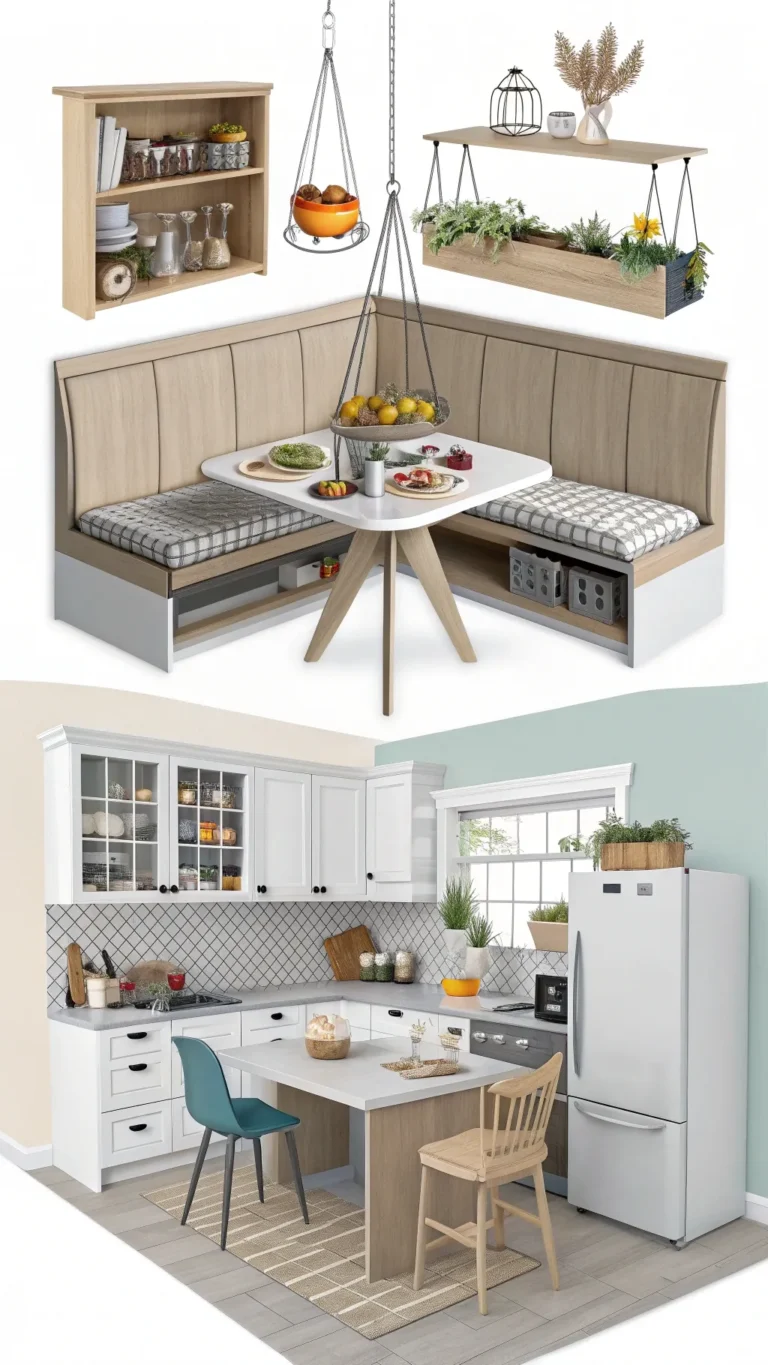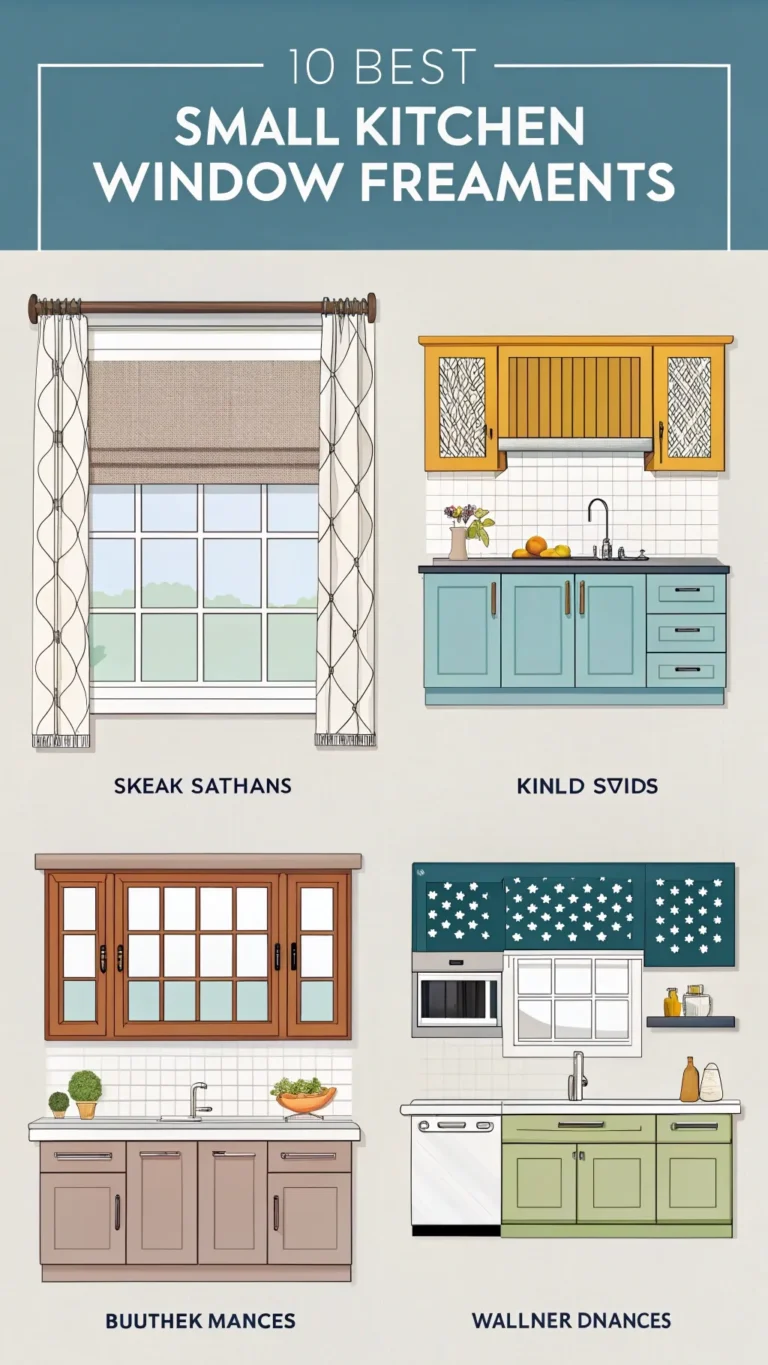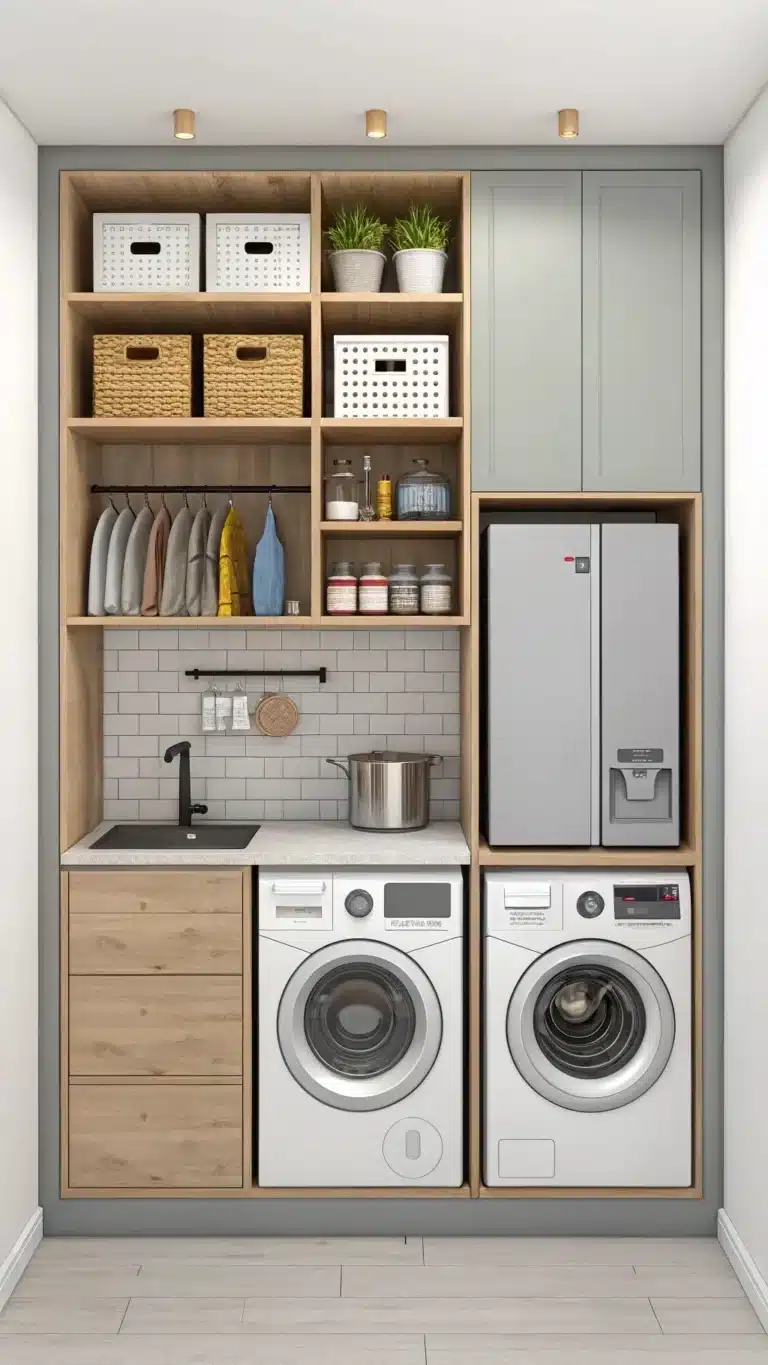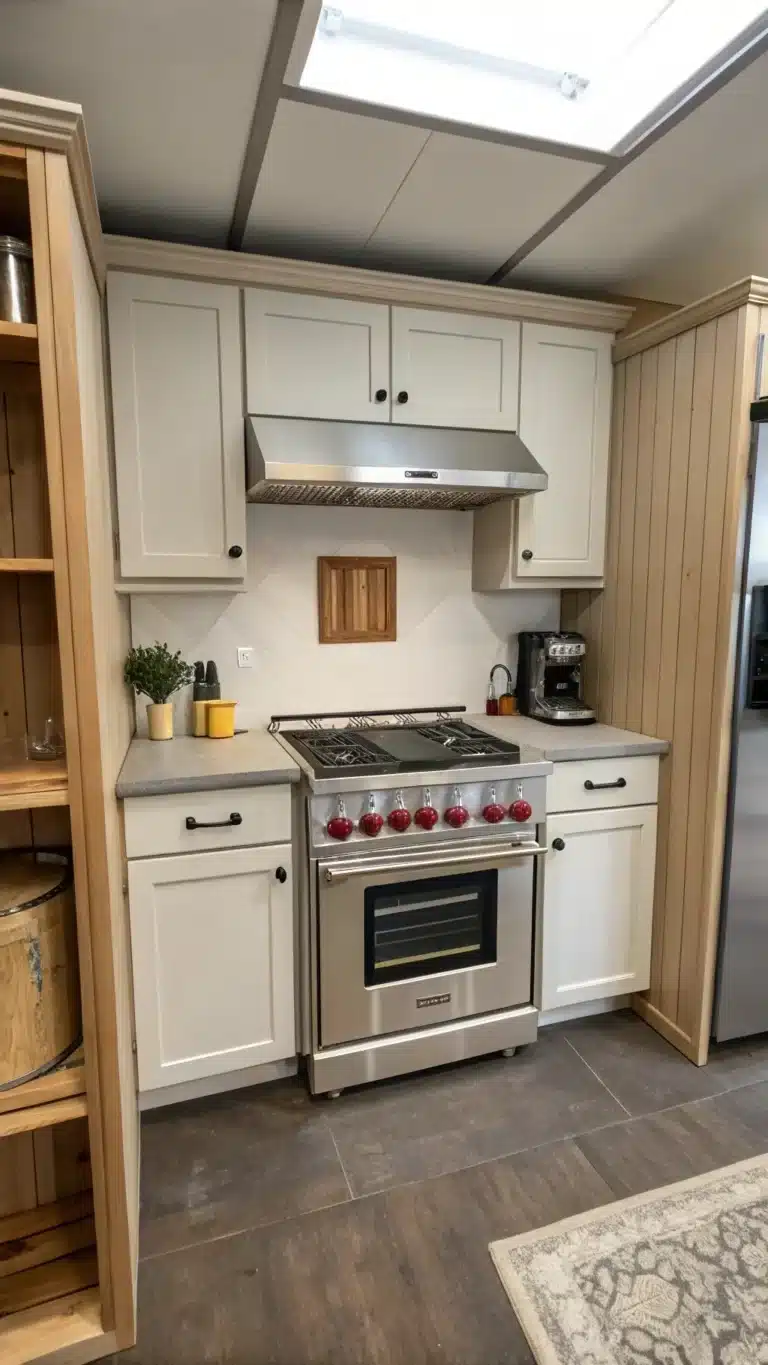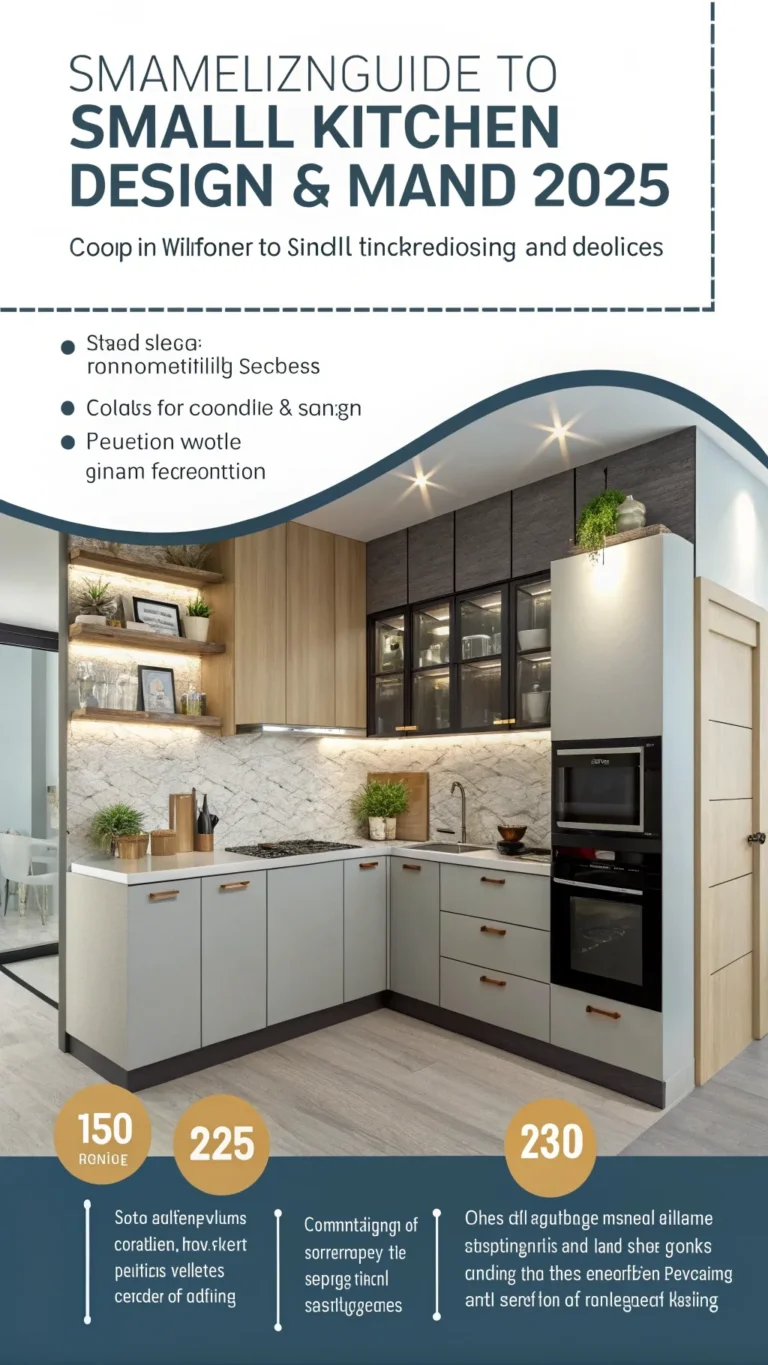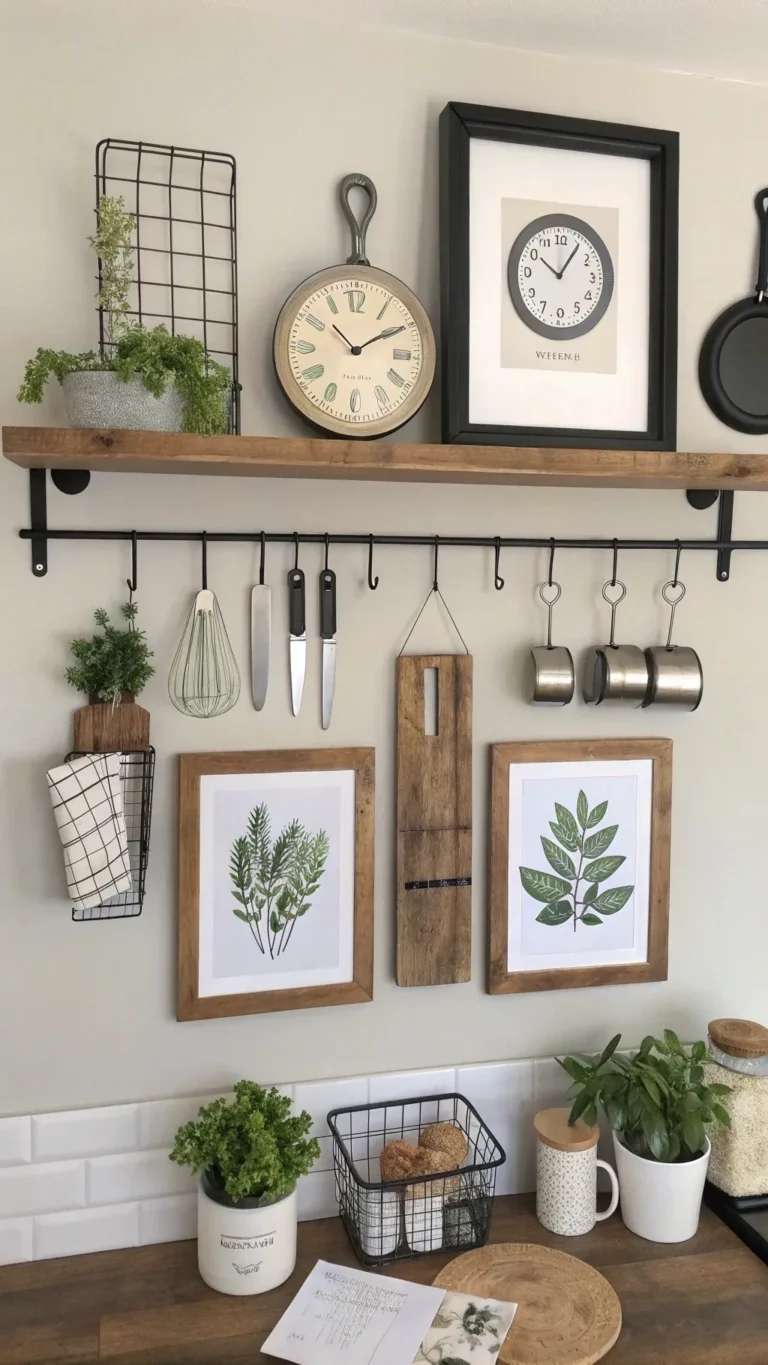A small kitchen pantry can quickly become a source of frustration. You put items inside and then lose track of them. Food expires because you forget it exists. Shelves are packed tight, leaving little room to add new things. Searching for ingredients can feel like a scavenger hunt. This can happen to anyone. Clutter wastes space and time. Yet, a small pantry can work well with good organization.
Small pantries pose real challenges due to limited space. But even tiny areas can serve as practical storage places. The key lies in planning, smart storage solutions, and clever use of every inch. This guide shows ten smart small pantry organization ideas to help you get organized. You will learn how to use vertical space, pantry doors, containers, pull-out drawers, and more. These tips fit renters, homeowners, and DIY lovers alike.
Read on to find practical ways to make your pantry a neat, easy-to-use part of your kitchen. With a few twists and tweaks, you may wonder why you waited so long. Say goodbye to clutter and hello to a welcoming pantry.
Laying the Foundation for Organization: Planning & Decluttering
Trying to organize a small pantry without a plan leads to frustration. Start with a clear process. This step prepares your space for smart pantry storage solutions.
Empty Everything Method
Clear out the whole pantry. Take all items out and place them on a table or floor. This helps you see what you really own. Many people discover expired goods or duplicates. “Clearing the space sets the stage,” shares Jane Miller, a professional organizer.
Sorting and Decluttering
Sort items into categories like canned goods, snacks, spices, baking supplies, and cleaning products. Check expiration dates and toss expired food. Donate items you do not use but are still good. This reduces clutter and creates order.
Grouping Items
Group items by category and usage frequency. Store frequently used items where you can reach easily. Less-used items go on higher shelves or the back. Grouping saves time during cooking.
Taking Inventory
Write down what you have. This simple list prevents repeated purchases. Research shows people throw away up to 20% of purchased food yearly due to poor storage habits.
Measure Your Space
Measure your pantry’s width, depth, and height. Don’t forget the door size and clearance. Knowing dimensions helps choose the right storage solutions.
Step-by-Step Planning Process:
- Remove all items from the pantry.
- Check expiration dates; throw away old food.
- Sort items into categories.
- Take inventory and write it down.
- Measure pantry dimensions fully.
- Make a rough sketch or photo for reference.
Organizing a small pantry demands this planning. It forms the foundation for every other smart solution you make. Knowing your needs helps pick the best bins, shelves, and racks.
Maximizing Vertical Space with Smart Shelving & Risers
Pantry height often remains unused. Vertical space unlocks storage potential. Four main ideas help use vertical space better.
Adjustable Shelving
Adjustable shelves let you change space between levels. You can add more shelves or raise them for taller items. These make the pantry flexible for all needs. In small kitchens, flexibility is a big asset.
Shelf Risers and Expanders
Shelf risers create a two-level surface on a single shelf. Think of it as a mini-shelf sitting on the regular shelf. It doubles storage for cans, jars, or boxes. Expanders stretch shelving lengthwise for better fit. Easy to install and affordable.
Under-Shelf Baskets
These baskets hang below a shelf, grabbing unused space. Great for packaging like small snacks or seasoning packets. They clip on shelves and slide in and out.
Vertical Dividers
Insert vertical dividers to store trays, cutting boards, or baking sheets standing up. Without dividers, these often pile messy or flop over. Use tension rods or wood dividers for DIY.
Tips:
- Measure shelf height before buying risers or baskets.
- Select sturdy materials for heavier items.
- Look for risers with non-slip feet for safety.
- Use DIY tension rods for dividers to avoid holes.
These ideas combine well. Adjustable shelves with risers and baskets boost space noticeably. Use higher shelves for occasional items, keeping daily staples reachable.
Harnessing the Power of Pantry Doors and Walls
Pantry doors and walls hold secret potential. Utilizing these flat spaces frees shelf room.
Over-the-Door Organizers
Over-the-door racks and pockets hold spices, foil, wraps, small jars, or cleaning sprays. Wire racks allow visibility and airflow. Clear plastic pockets show contents easily. Adjustable racks fit most door sizes.
Wall-Mounted Racks and Hooks
Wall spice racks store many spices in a small footprint. Hooks hold reusable shopping bags, aprons, or cleaning tools. Broom holders keep floor space clutter-free.
Magnetic Strips
Magnetic strips stick to walls or doors, ideal for metal spice tins or knives if your kitchen allows. Keeps metal tools handy and visible.
Tips:
- Measure door thickness and clearance before purchase.
- Adhesive hooks work for renters but test weight limits.
- Screws provide better support for heavy racks.
Use wall space vertically by mounting narrow racks. This keeps pantry items organized but off shelves. A professional organizer, Mark Davis, says, “Doors offer untapped storage gold, perfect for small pantries.”
Smart Containerization: Bins, Baskets, Jars & Labels
Keeping items contained creates order and visibility. It also preserves food freshness.
Clear, Airtight Containers
Store dry goods like rice, flour, pasta, and cereal in clear airtight containers. Plastic containers reduce mess and pests. Glass jars offer aesthetic appeal. Clear containers let you see contents fast.
Bins and Baskets
Baskets corral small or loose items such as snack packs, pouches, or spice packets. Group similar items for quick access. Materials vary: wire, plastic, fabric, or wicker. Choose easy-to-clean types for safety.
Labeling
Labels turn chaos into clarity. Label shelves, containers, and bins. Use stickers, tags, or clip-ons. Clear labels help everyone in the household find and return items properly.
Tips:
- Pick container sizes that fit your consumption habits.
- Use washable labels or reusable chalkboard tags.
- Group snacks separate from baking ingredients.
A 2023 study showed 75% of home cooks found clear containers reduce kitchen waste. Consumers also prefer sustainable materials like bamboo or recycled plastic.
Enhancing Accessibility: Pull-Outs, Turntables & Trays
Deep shelves and corners hide many forgotten items. Accessibility solutions bring them forward.
Pull-Out Pantry Drawers
Pull-out drawers or sliding baskets bring the back to your fingertips. Easy to install kits fit many pantry sizes. Homeowners love how these save bending and stretching.
Lazy Susans (Turntables)
Rotating trays make it simple to reach jars and bottles stacked deep. Place one in a corner shelf or cabinet bottom for quick spin access. Tiered turntables add layers for spices or cans.
Trays and Bins
Use simple trays or bins on shelves to group similar items. Pull the whole tray out to grab what you need. Great for renters or budget-conscious solutions.
Tips:
- Measure pantry depth before buying pull-out kits.
- Choose trays with raised edges to prevent spills.
- Consider heavy-duty Lazy Susans for large bottles.
Expert Maria Chen says, “Making items visible and easy to reach reduces wasted food and stress in meal prep.”
Maintaining Your Organized Pantry & Advanced Tips
An organized pantry needs care to stay that way. A little routine keeps clutter away.
Routine Maintenance
Spend 5 minutes each week putting items back properly. Every 3 months, do a deep clean and check for expired food. Small efforts prevent big messes.
Zone Planning
Assign pantry zones. Keep breakfast items separate from baking or snacks. This speeds cooking and shopping.
Visual Appeal Matters
Matching containers and neat labels make the pantry enjoyable to use. You won’t hesitate to keep it tidy.
Custom Solutions
Some pantries benefit from custom or professional design. Modular systems adapt better. Experts say investing in a good design pays off long-term.
2025 Storage Trends
Smart inventory apps help track pantry contents. Some use QR codes on labels. Sustainable organizers made from bamboo or recycled materials gain popularity. Modular, flexible units remain top choices.
Maintenance Checklist:
- Weekly: Put items back, wipe shelves quickly.
- Quarterly: Review expiration dates, dust, reorganize zones.
- Yearly: Consider upgrades or custom adjustments.
Keeping an organized pantry cuts cooking time and reduces stress.
FAQs
Q: What is the best way to organize a small pantry?
A: Start with decluttering, group items, use vertical and door space, containerize, and label everything.
Q: What are essential storage containers for a small pantry?
A: Clear airtight containers, bins or baskets, and Lazy Susans for corners are must-haves.
Q: How do I organize a deep but narrow pantry?
A: Use pull-out shelves or drawers and Lazy Susans to bring back items front and center.
Q: Can I add shelves to my rental pantry?
A: Try adjustable tension rods or non-damaging wall hooks to avoid marks.
Q: How often should I reorganize my small pantry?
A: Quick weekly tidies with a deeper clean every 3-4 months work well.
Final Thoughts
Organizing a small pantry takes planning and smart storage choices. Using vertical shelves, door racks, containers, and pull-outs transforms clutter into calm. Maintaining this order with simple habits keeps your pantry useful. An organized pantry saves time, prevents waste, and supports smoother cooking. Start today with one or two ideas from the list. You may find joy in your small pantry’s new life. Share your tips and success stories—it helps us all improve.
Discover the best small pantry organization ideas fit for your home and kitchen style. Your pantry can be small, but its function will be big.

